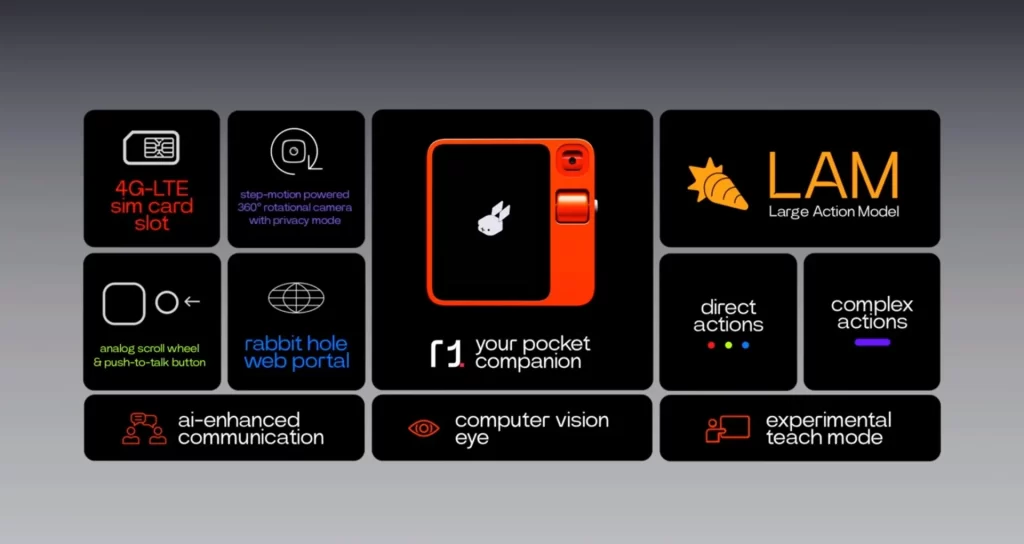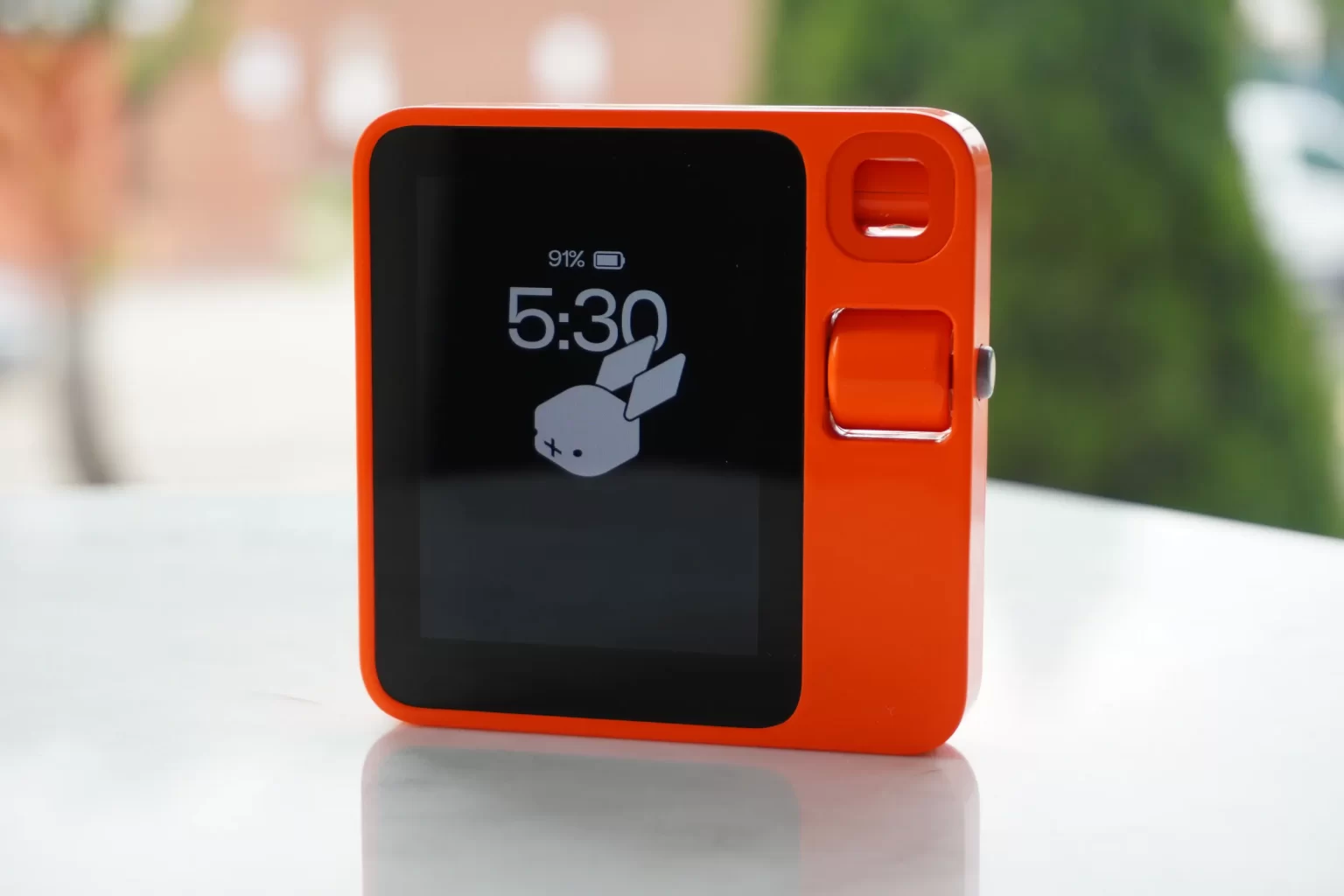The Rabbit R1, once heralded as a revolutionary AI gadget, has faced significant challenges since its launch five months ago. Initially drawing interest from 100,000 buyers, a mere 5,000 users engage with the device daily. This startling statistic was revealed by Rabbit founder Jesse Lyu during a recent interview with Fast Company, highlighting the struggles the device has encountered in the rapidly evolving tech landscape.
The Initial Hype and Promises
When the Rabbit R1 debuted at CES earlier this year, it generated immense excitement among tech enthusiasts and consumers alike. Marketed as a cutting-edge AI tool that could seamlessly integrate into daily life, the R1 seemed to promise a glimpse into the future of personal technology. Its futuristic design and ambitious feature set positioned it as a potential game-changer, one that could redefine how we interact with devices.
However, the excitement quickly turned to disillusionment for many early adopters. Users anticipated a product that would elevate their day-to-day tasks and interactions, yet many found that the R1 struggled to deliver on its lofty promises. The gap between expectation and reality proved to be a significant hurdle for the device.
A Premature Launch
Lyu candidly admitted that the R1 launched before it was truly ready, a decision made in an attempt to outpace larger tech companies that were also vying for dominance in the AI gadget market. While this strategy may have allowed Rabbit to claim an early position in the field, it came at a cost. The device’s features were not fully polished, leading to a user experience that felt frustratingly incomplete.
Critics have pointed out that many functions advertised during the launch were either lacking or non-functional, prompting users to label the device as “broken.” Such feedback has contributed to a significant drop in daily usage, as individuals who initially purchased the R1 for its potential quickly abandoned it due to unmet expectations.
The Competitive Landscape
The Rabbit R1’s struggles are emblematic of broader challenges facing standalone AI gadgets in today’s market. With established technology companies like Apple and Google integrating advanced AI features directly into their smartphones, many consumers are left questioning the necessity of additional devices. The convenience and functionality offered by smartphones make it difficult for standalone gadgets to carve out a sustainable niche.
The challenges are further compounded by the emergence of competing products like the Humane AI Pin, which also launched amid significant anticipation but has encountered its own share of issues. Reports indicate that Humane has had to take back more AI Pins than it has sold, underscoring the difficulties these new devices face in a crowded marketplace.
Upcoming Updates: A Last-Ditch Effort?
As Rabbit prepares to release its “large action model” update on October 1, there is cautious optimism about the potential for reinvigorating interest in the R1. This update aims to enhance the device’s capabilities by allowing it to perform tasks such as logging into websites and ordering tickets with simple voice commands. However, skepticism remains regarding whether this update will be sufficient to persuade users to revisit the device.
While the features promised in the update are intriguing, the question remains: will they be enough to overcome the initial disappointment? Users who have abandoned the R1 may not be easily convinced to give it another shot, especially when larger tech companies are also introducing competitive AI features that enhance the user experience.
The Broader Implications for AI Gadgets

The tumultuous journey of the Rabbit R1 serves as a lesson for tech companies exploring the burgeoning market for AI gadgets. As the initial excitement wanes, it becomes increasingly clear that long-term success hinges on delivering a reliable and user-friendly product. The R1’s struggles underscore the importance of timing, functionality, and user experience in navigating the complex landscape of emerging technologies.
Moreover, the market for AI gadgets is not merely about creating novel devices; it’s about solving real-world problems in a way that integrates seamlessly into users’ lives. Consumers are looking for solutions that add genuine value, not just novelty. Products that can demonstrate this value are more likely to succeed in capturing and retaining user interest.
Potential Paths Forward
While the R1 has faced significant setbacks, there is still hope for innovation in this space. Devices like Meta’s Ray-Ban smart glasses highlight the potential for integrating AI features into familiar and trusted form factors. The success of such products suggests that well-designed devices that enhance user experience can find their place in the market, even amid fierce competition.
Additionally, there is anticipation surrounding new developments from notable figures in the tech world, such as Jony Ive, who is working on an AI-focused device of his own. Such initiatives could breathe new life into the market for standalone AI gadgets, challenging existing paradigms and reshaping user expectations.
Conclusion: Navigating the Future
In summary, the Rabbit R1’s journey illustrates the complexities of introducing innovative technology into an already saturated market. Despite the initial hype and potential, the device has struggled to maintain user engagement due to a combination of premature launch decisions, unfulfilled promises, and intense competition from established brands.
As Rabbit prepares for its upcoming updates, the tech community will be watching closely to see if these changes can reinvigorate interest in the R1 and encourage users to reconsider its potential. The future of AI gadgets is uncertain, but the lessons learned from the R1’s rocky road will undoubtedly inform the development of future technologies.

